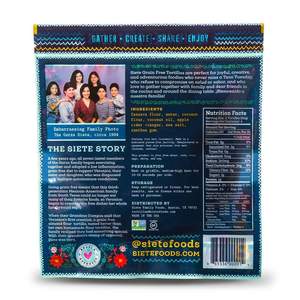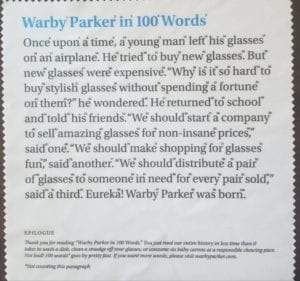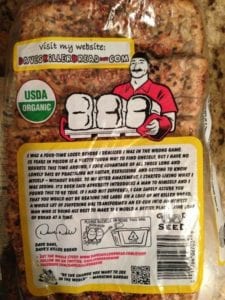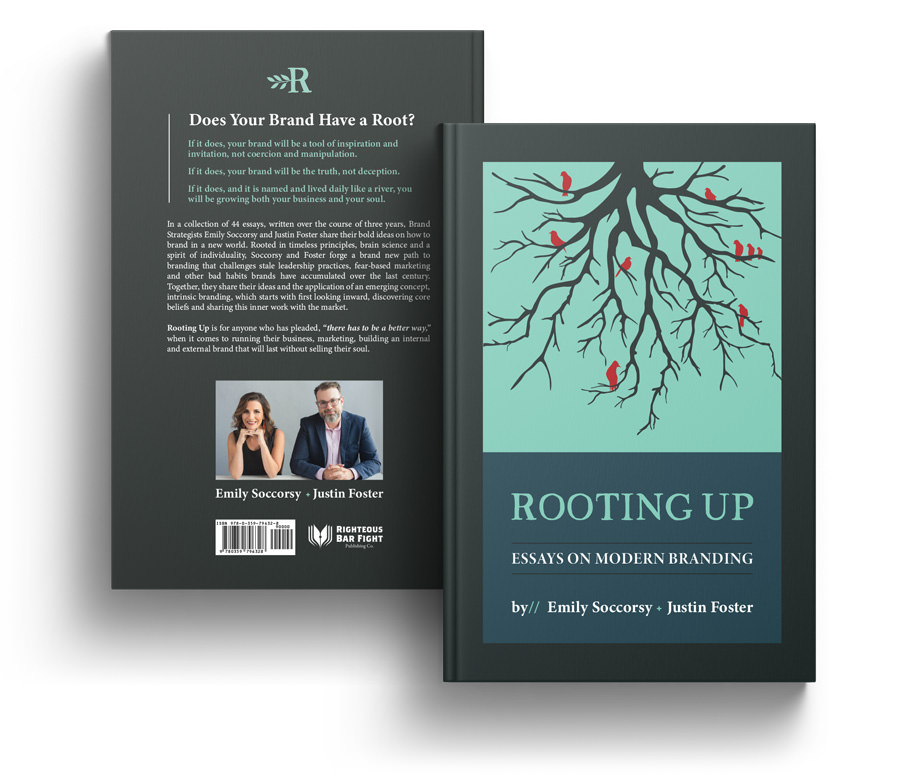Filed Under: 21st Century Branding, Intrinsic Branding, Story
By Jennifer Lawhead
You may be telling your story, but are you telling it on purpose?
We have a client who spent months crafting and fine tuning his origin story. He infused it with detail and emotion, with the end result being a story masterpiece that would compel any reader to want to work with him.
The problem? After all of that work, he buried the story deep within his website. When readers discovered it, they would be moved. However, he significantly decreased his chances of it ever being read.
If you are a brand that lives by its beliefs and principles, and your clients love you, then your story is worth telling. And when you have a story worth telling, it should shine front and center.
Your story should come before the following: your services, your pricing and your differentiators.
Here are three examples of brands that are putting their stories at the beginning of their messaging (and killing it with their branding in general):

Siete Foods. Mexican food is typically packed with grains and dairy, but the Siete family was at odds with their culinary traditions when one family member had to completely cut both of these from her diet. They reimagined their favorite Mexican dishes with new ingredients that would work for their family, and later, for groups of people who also have dietary restrictions. What I love about Siete Foods’ story is how they tell this narrative with an old school photo of the family at its side. When reading it, you immediately feel the love and their long-held values of family and heritage.

Warby Parker. I have new glasses, thanks to Warby Parker, and I highly recommend this brand for all of your eyewear needs. Not sure what style you’ll need? Warby Parker ships five lens to you so you can try on at home. Glasses never fit your face? Warby Parker’s team has you take selfies to guarantee proper dimensions. But my favorite part of the Warby Parker experience was their 100-word story. When I opened the box and found my new glasses in the case, I also found a little lens cloth. The cloth proudly displayed their brand story in 100 words. I loved the brilliance of placing the story on the lens cloth that will surely stay with the glasses and the case for years to come. This means I will be reminded of the Warby Parker story daily.

Dave’s Killer Bread. Dave’s Killer Bread, if you’ve had it, is filled with nutrition and tastiness. I eat it often, and prefer it to any other bread on the market. But that’s not why I first purchased it. I originally bought it because of the brand story. Dave’s story begins with a 15-year jail sentence, but after his release, he used the opportunity to work in his family’s bakery. Baking, it turns out, would be his path to redemption and he set out to make the most tasty, GMO-free organic bread on the market. This story is displayed proudly on Dave’s Killer Bread’s packaging, and you can easily read it in the grocery store aisle. If you ever needed to make a case for why vulnerability should be included in storytelling, and to embrace your warts-and-all past, look to Dave’s Killer Bread.
What I appreciate about these examples is the intentionality these brands took with their brand story. It would have been easy to brand by its differentiators (Siete has the best grain-free Mexican foods, Warby Parker has the best glasses, Dave’s Killer Bread has the best organic bread). But that would have been boring. And I doubt I would be speaking about these brands as passionately if they had gone that route.
My challenge for you: if you have taken the time to craft your brand story, put it somewhere bold. This could be the homepage of your website, your packaging, or directly on your product like Warby Parker does. Challenge yourself to not explain your product but instead, tell your story.
